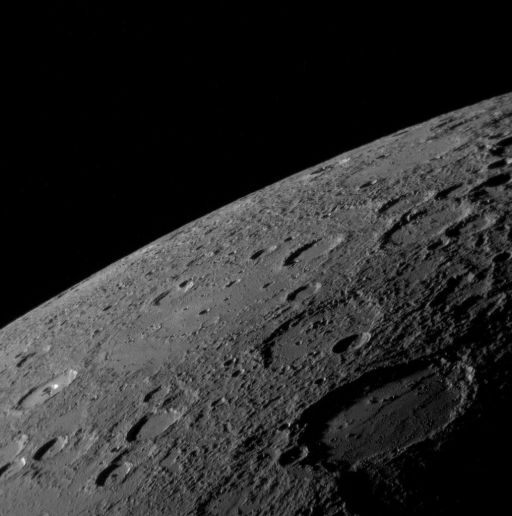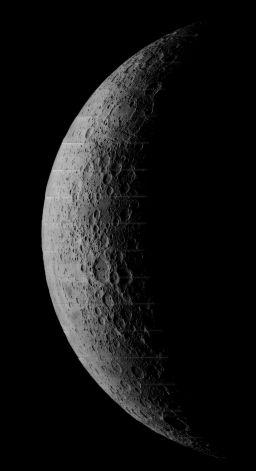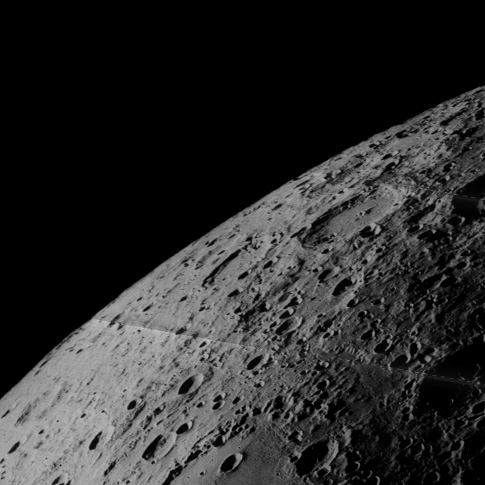Emily Lakdawalla • Jan 17, 2008
Looking over Mercury's limb
This is just a brief post as I'm hard at work on a lengthy story wrapping up the MESSENGER Mercury flyby. There is a steady trickle of images coming out from the MESSENGER mission, and one of the ones from this morning's release really tickled my imagination. In this view, taken as MESSENGER approached Mercury, we're looking across Mercury's limb at black space. I love the slanting perspective of photos across the edges of planetary disks, and the slanting light in this high-phase view makes it all the more dramatic. Here's the dynamic visualization for context.

NASA / JHUAPL / CIW
Across Mercury's horizon
This view of Mercury's limb against black space is part of a large mosaic of a crescent Mercury that MESSENGER saw on its approach to its first flyby of the planet, on January 14, 2008 at 18:10 UTC. The large crater at lower right was seen by Mariner 10 and named Sholem Aleichem.I wanted to see if Mercury's craters really were unusually smooth, so I hunted down an image of the Moon with similar geometry to compare it to. I was looking for a crescent phase view that would have the same dramatic lighting as the MESSENGER Mercury approach images. Again, I'm grateful to the Lunar and Planetary Institute for their efforts to place the entire archive of Lunar Orbiter images online, because it contains a lot of treasures, including this lovely view of a crescent-phase Moon, taken from its far side. I prefer farside images of the Moon for comparison to Mercury, because the near side of the Moon is so completely covered with dark mare basalts that its geology has a totally different character to Mercury's. The lunar far side is much more similar to Mercury, at least superficially.
Support our core enterprises
Your support powers our mission to explore worlds, find life, and defend Earth. You make all the difference when you make a gift. Give today!
Donate

 Explore Worlds
Explore Worlds Find Life
Find Life Defend Earth
Defend Earth



